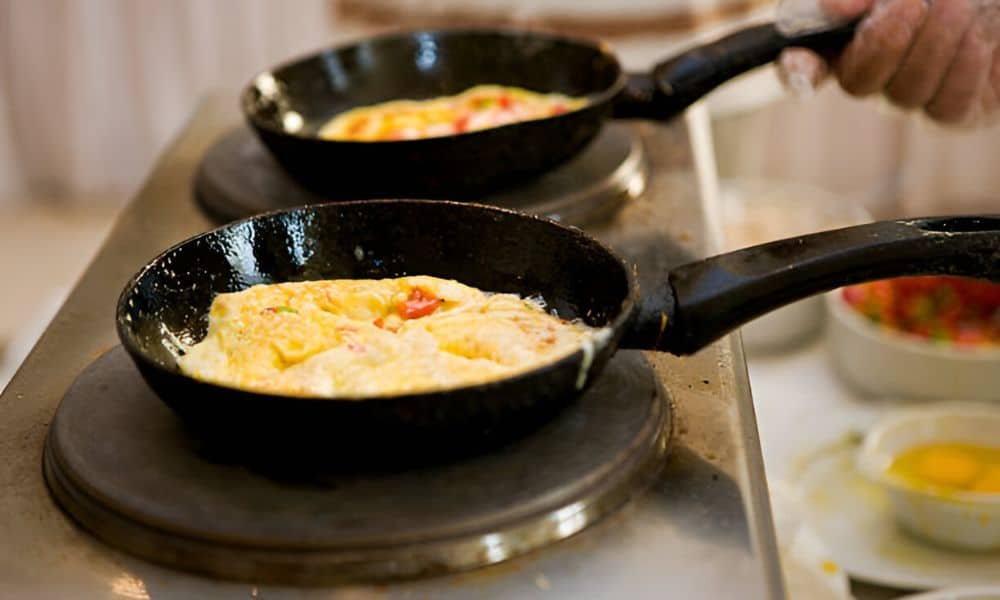The first time I tried to cook an omelette in a stainless steel pan, it stuck like glue. I scraped and flipped, but the eggs clung tight. I felt frustrated and blamed the pan. Later, I learned it wasn’t the pan—it was the process. Many beginners face the same struggle. But with the right steps, a stainless pan makes beautiful omelettes. In this guide, I’ll show you how to cook omelette in stainless steel pan the easy way. Step by step. No more sticking. Just smooth, golden eggs that slide out like a dream. Let’s make your next omelette a success.
Why Use a Stainless Steel Pan for Eggs?
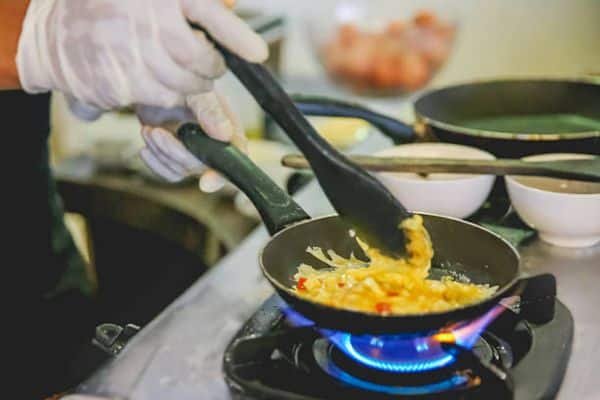
They are strong. They last for many years and handle daily cooking with ease. You can heat them high or low and get steady results. That means better control over eggs.
There’s no coating to peel or scratch. Just clean steel that gets better with time. You can scrub it, heat it, and trust it.
Nonstick pans may seem easier. But they wear out fast. They also don’t like high heat.
For eggs, the best small for eggs is between 8 to 10 inches. That size gives you room to fold, flip, and finish like a pro.
Tools and Ingredients You’ll Need
You don’t need much to get started. Here’s a short list of tools I use every time:
- A steel pan
- A soft spatula
- A small bowl
- A fork or small whisk
The ingredients are just as simple:
- Fresh eggs
- A pinch of salt
- A spoon of butter
For best results, use the best small fry pan for eggs—one that’s 8 to 10 inches wide. It gives your omelette space to cook without being too big to handle.
Step-by-Step: How to Cook Omelette in Stainless Steel Pan
Preheat Your Pan (The Secret Step)
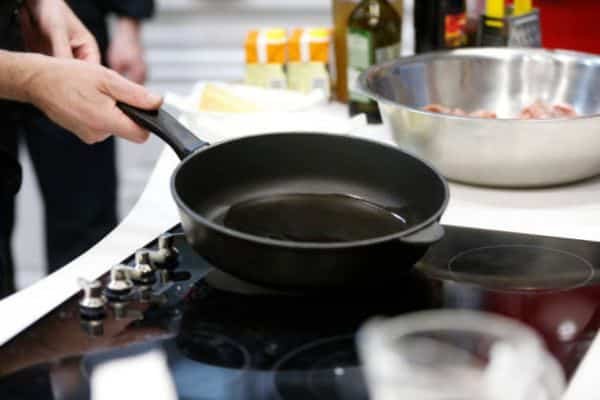
Place on medium heat. Let it warm up for about one or two minutes.
Now do the water test. Flick a few drops of water into the pan. If they bounce and roll like tiny balls.
Even heat is key. A cold pan causes sticking. A hot, even surface gives the eggs room to lift and cook.
Add the Butter and Let It Melt
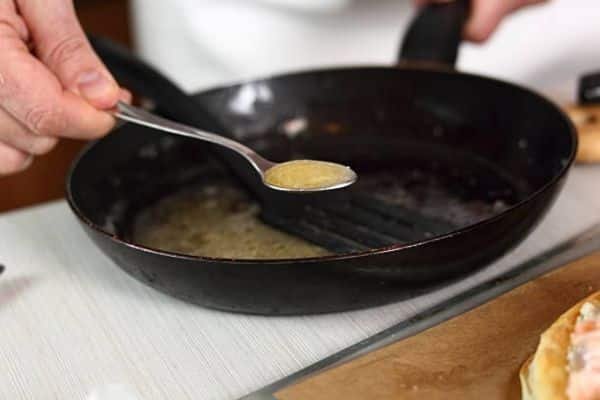
Drop in a spoonful of butter. It should melt fast and bubble slightly. Swirl the pan so the butter covers the whole surface. Use your spatula if needed. Don’t let the butter turn brown or smoke. That means it is too hot. Just lift it off the heat for a few seconds and try again.
Pour in the Eggs and Stir Gently
Now pour in your beaten eggs. Let them sit for a few seconds. Gently pull the edges toward the center using your spatula. Tilt the pan to let raw egg fill the gaps. This builds soft layers. Don’t stir too much. The goal is tender folds, not a scramble.
Fold and Slide
Once the top is just set, lower the heat. Use your spatula to fold the omelette in half. Go slow. Let it hold its shape. Tilt the pan and guide the omelette onto your plate. A soft lift with the spatula helps it slide without breaking. Done right, it should come out smooth, light, and golden.
My Tried-and-True Tips for Perfect Omelettes
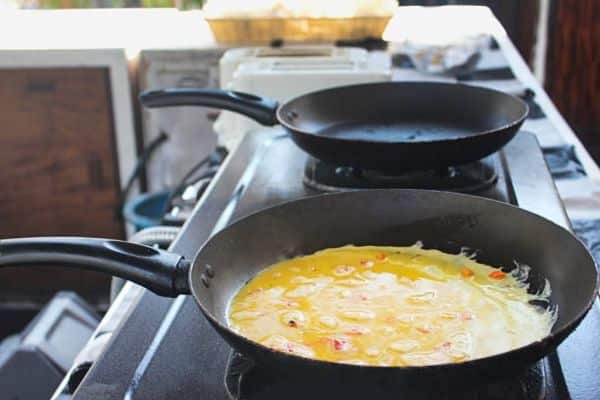
Fresh eggs make a big difference. The whites hold better, and the yolks taste richer. They cook up fluffier too. Let the pan heat fully before you start. A warm pan keeps the eggs from sticking.
Skip high flame. It cooks the eggs too fast and ruins the texture. Medium heat gives you control.
Use enough butter. It coats and adds flavor. Dry pans lead to stuck eggs. Stir with care. You want soft folds, not broken bits. A gentle swirl is all it takes. Let the eggs move, not break.
What to Avoid (Based on My Early Mistakes)
Don’t start with a cold pan. Cold steel grips the eggs. Warm it first and always test with water. Too little butter? Big problem. The eggs will stick and tear. A full coating keeps things smooth.
Hold off on extras like cheese or herbs. Add them too soon, and they sink or burn. Let the eggs set first. And don’t flip it like a pancake. You’re not making a stir-fry. A gentle fold is all it needs. No tossing, no stress. Just a clean, calm slide.
Easy Add-ins for More Flavor
Omelettes love flavor. A few simple extras can turn eggs into something special. Try fresh herbs like chives or parsley. Add soft cheese like cheddar or feta. Sautéed onions, peppers, or mushrooms also work well.
Drop them in right after pouring the eggs. This helps them settle without sinking too deep.
Keep the fillings light. Too much weight can tear the fold. A thin layer is enough to boost flavor without ruining the shape. Simple, tasty, and easy to make your own.
Cleaning the Pan (Without Stress)
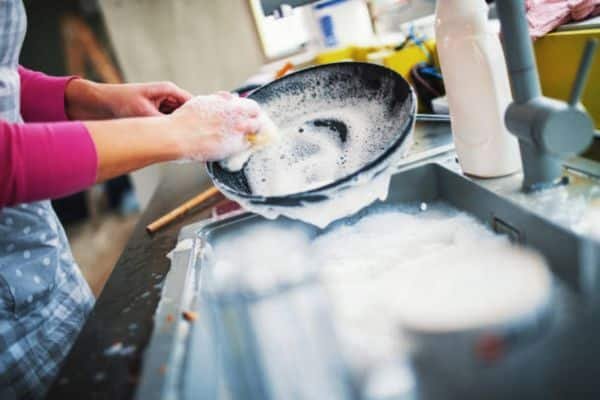
Got stuck bits? No problem. Fill the warm with hot water. Let it soak for 10 to 15 minutes. Most of the mess will lift on its own.
Use a soft sponge to wipe it clean. Skip steel wool or harsh pads. They can scratch the surface and dull the shine.
That’s the beauty of stainless steel. You can scrub it, heat it, and it still lasts for years. No peeling. No flaking. Just clean the steel ready for your next omelette.
The Best Small Fry Pan for Eggs: My Recommendation
Over the years, I’ve tried many pans. One brand I keep coming back to is All-Clad. Their 8-inch stainless steel fry pan is my go-to for eggs. It heats evenly, feels solid, and lasts forever.
What I love most is the balance. It’s light enough to handle with one hand but strong enough to stay steady on the burner. The sides are just high enough to flip or fold with ease
Final Thoughts
Don’t worry if your first few tries don’t go as planned. We’ve all been there. Every omelette is a chance to learn. Once you get the feel for it, the process becomes second nature. A smooth fold, a golden edge, a soft bite—it’s deeply satisfying.
Give it a go. Try the steps, enjoy the moment, and tweak it your way. I’d love to hear how your omelette turns out. Let’s turn breakfast into something worth smiling about.

